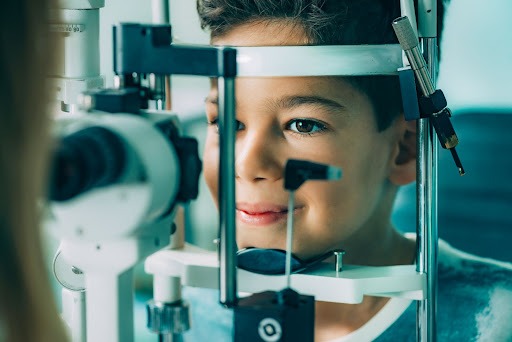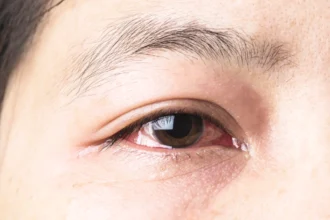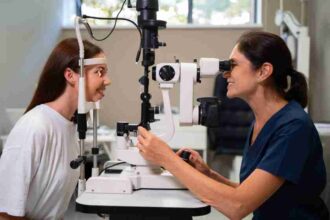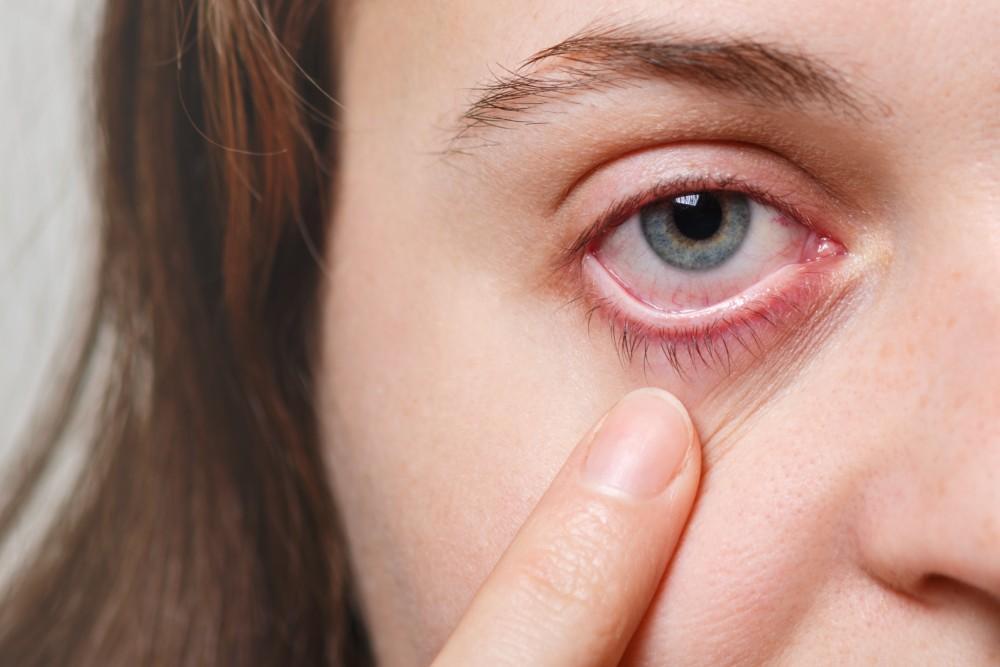Introduction
Children’s eye health is essential for their overall development, academic success, and quality of life. Healthy vision plays a vital role in how children learn, play, and interact with the world. As a parent or caregiver, your proactive efforts can help detect and prevent vision problems early. This article outlines practical tips, signs to watch for, and strategies to support your child’s eye health.
Why Eye Health Matters in Childhood
Critical for Learning and Development
Vision problems in children can directly impact learning, reading ability, and behavior. Up to 80% of learning is visual, which means undiagnosed eye issues can hinder academic performance.
Early Detection Prevents Long-Term Issues
Identifying problems like lazy eye (amblyopia), crossed eyes (strabismus), or refractive errors early can help treat them before they become permanent.
Common Eye Problems in Children
Refractive Errors
- Myopia (Nearsightedness) – Distant objects appear blurry.
- Hyperopia (Farsightedness) – Difficulty seeing close-up objects.
- Astigmatism – Blurred or distorted vision at all distances.
Amblyopia (Lazy Eye)
Occurs when one eye is weaker than the other, often due to misalignment or significant refractive error.
Strabismus (Crossed Eyes)
A condition where the eyes do not align properly and may point in different directions.
Conjunctivitis (Pink Eye)
A common infection or allergy that causes redness, discharge, and irritation.
Tips for Maintaining Children’s Eye Health
Schedule Regular Eye Exams
Start eye exams by age 1 and continue:
- At age 3
- Before starting school
- Every 1–2 years after that
Encourage Outdoor Play
Outdoor activity helps reduce the risk of developing myopia, especially in early years.
Limit Screen Time
Excessive screen time can cause digital eye strain and delay visual development.
Recommendations:
- Follow the 20-20-20 rule: Every 20 minutes, look at something 20 feet away for 20 seconds.
- For kids under 2: Avoid screen time entirely (except video chatting).
- For kids 2–5: Limit to 1 hour per day of high-quality content.
Promote a Healthy Diet
Ensure your child’s diet includes:
- Carrots, sweet potatoes (Vitamin A)
- Leafy greens (Lutein and Zeaxanthin)
- Eggs, citrus fruits, and nuts (Vitamins C & E)
- Fish like salmon (Omega-3 fatty acids)
Provide Proper Lighting
When reading or doing homework, make sure there’s good lighting to avoid eye strain.
Teach Hygiene and Eye Safety
- Encourage handwashing to avoid infections
- Discourage rubbing eyes
- Use protective eyewear during sports and outdoor activities
Signs Your Child May Have Vision Problems
- Squinting, covering one eye, or tilting the head
- Sitting too close to screens or books
- Frequent eye rubbing
- Complaints of headaches or eye pain
- Difficulty concentrating in school
- Avoidance of reading or close-up tasks
If you notice these signs, consult a pediatric eye specialist promptly.
Role of Schools and Teachers
Teachers and school nurses often observe signs of vision problems before parents do. Encourage schools to offer routine vision screenings and support vision-friendly learning environments.
When to See a Pediatric Eye Specialist
Seek an appointment if your child:
- Fails a school vision screening
- Has a family history of eye disease
- Shows signs of eye misalignment or abnormal eye movement
- Complains of blurry or double vision
Early professional intervention can make a significant difference in treatment outcomes.
Conclusion
Safeguarding your child’s eye health is a shared responsibility between parents, caregivers, teachers, and healthcare providers. By being proactive—scheduling regular eye exams, limiting screen exposure, and promoting healthy habits—you lay the foundation for your child’s lifelong visual wellness.
FAQs
1. At what age should my child have their first eye exam?
A child should have their first comprehensive eye exam at 6–12 months old, then again at age 3, and before they start school.
2. How can I tell if my child needs glasses?
Look for signs like squinting, sitting too close to the TV, or frequent headaches. An eye exam is the best way to confirm.
3. Are digital screens harmful to children’s eyes?
Prolonged screen use can lead to digital eye strain. Managing screen time and ensuring breaks can minimize risk.
4. Is it safe for children to use contact lenses?
Yes, but typically recommended for older children and teens who can handle hygiene and care responsibly. A doctor should assess suitability.
5. Can nutrition really affect my child’s vision?
Yes, a diet rich in vitamins A, C, E, and omega-3s supports eye development and reduces risk of some conditions.












